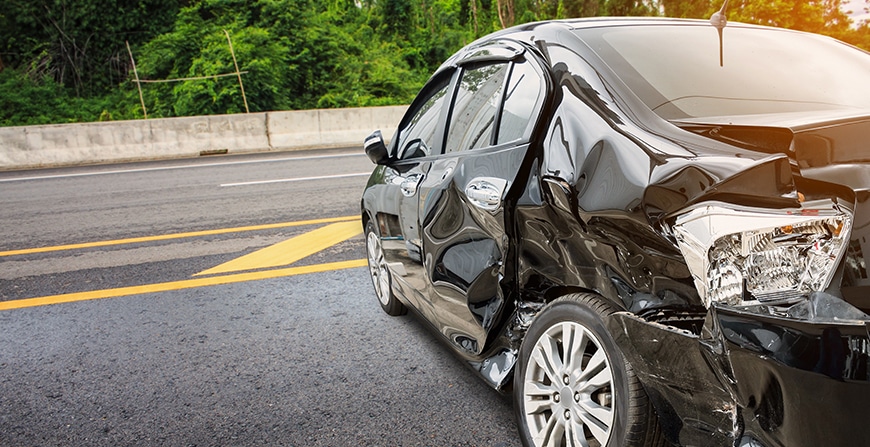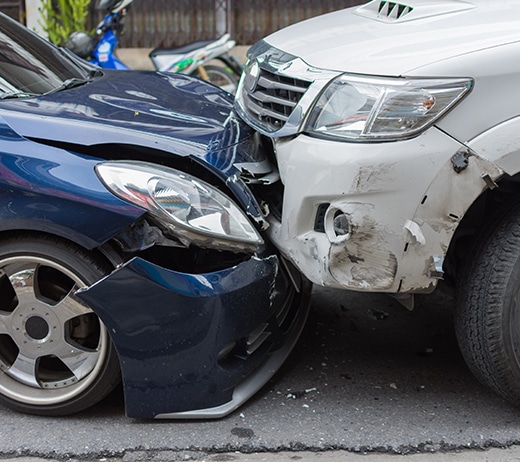
Texas Autonomous Vehicle Accident Attorneys
Help for victims of accidents with driverless cars in Austin, Fort Worth, and Dallas
Autonomous driving technology has long promised us a safer driving experience. Removing human error from operating a vehicle – no more falling asleep at the wheel, no more drunk driving, no more distracted driving – feels like a miracle. Harnessing the power of technology to deliver greater safety benefits to everyone on the road is the main goal of autonomous cars and trucks, and that can’t be a bad thing, right?
However, who is liable when things go wrong? Who should be held accountable when technology fails, is hacked, or used irresponsibly? If you or a loved one suffered injury in an accident with a self-driving or autonomous vehicle, matters of liability can get complicated. The experienced Texas injury attorneys at Slack Davis Sanger can help sort things out and work to secure compensation for your injuries and losses.
“Slack Davis Sanger came highly recommended to me by a colleague. From my first meeting with Mike Davis, I knew my sisters and I had made the right choice. Slack Davis Sanger managed all of the details and people day-to-day…This firm delivered – and more.”- Kyle Smith, Client
Involved in an Accident?
We're Ready to Help
What is an autonomous vehicle?
The National Highway Traffic Safety Administration (NHTSA) touts the benefits of autonomous vehicles, stating these cars and trucks will ultimately “integrate onto U.S. roadways by progressing through six levels of driver assistance technology advancements.” Many of today’s vehicles already utilize some of these technologies, like lane assist, self-parking, and auto pilot features. The NHTSA’s industry-standard six levels of automation are as follows.
- Level 0: No automation. The individual performs all driving tasks.
- Level 1: Driver assistance. Here, the driver controls the vehicle and driving tasks, but the car may have some features like assistive steering or braking and accelerating – but not both at the same time.
- Level 2: Partial automation. Level 2 vehicles feature advanced driver assistance systems (ADAS), where the car can control steering and braking/accelerating simultaneously in some circumstances. However, the driver must pay full attention at all times and perform the other driving tasks.
- Level 3: Conditional automation. These feature an automated driving system (ADS), which can perform all driving tasks in some circumstances. In these circumstances, the driver must be attentive and ready to take back control when the ADS requests. Otherwise, the driver performs all other driving tasks.
- Level 4: High automation. Here, an ADS can perform all driving tasks as well as monitor the driving environment in some circumstances. In these circumstances only, the driver doesn’t need to pay attention.
- Level 5: Full automation. Level 5 vehicles can perform all driving tasks in every circumstance. Humans are passengers only and don’t need to operate the vehicle in any capacity. Note that we currently don’t have any Level 5 cars available for consumers.
Autonomous vehicles use technology like cameras, sensors, and radar to navigate and analyze traffic conditions and surroundings. This helps them detect other cars, road conditions, traffic signals, pedestrians, stationary objects, and more.
Major players in the autonomous vehicle industry include:
- Tesla
- Waymo
- Pony.ai
- Uber Technologies
- Ford
However, these high-tech vehicles still present many risks, and can’t prevent every factor that could cause a crash. In fact, the Insurance Institute for Highway Safety (IIHS) reported in 2020 that autonomous vehicles might only prevent one-third of all car accidents.

What are the risks associated with self-driving cars?
Even though there is currently no Level 5 (full automation) vehicle on the market, when manufacturers advertise their cars as “driverless,” drivers may start behaving that way. One of the biggest risks of self-driving vehicles remains human error, among a host of others:
- False sense of security. Many car accidents involving semi-autonomous vehicles are a result of distracted driving. Tech expert Lance Eliot tells Forbes, “Even if the automaker tells them they need to stay attune to driving, the temptation is now twofold, their false belief that they don’t need to remain engaged in driving, coupled with their desire to do something else (maybe even closing their eyes and catching a nap).”
- Technology isn’t ready. According to a 2020 AAA study, vehicles with equipped with ADAS experienced some sort of issue every eight miles for every 4,000 miles travelled. Nearly 75 percent of these errors involved issues with lane departure or erratic lane positioning. If a driver isn’t paying attention and their vehicle drifts from the lane, a devastating collision could occur.
- Fire risk. The new wave of autonomous vehicles are electric, which utilize lithium-ion batteries –highly combustible in the event of a collision. The National Transportation Safety Board reports these batteries can explode, causing fires and releasing toxic chemicals and debris.
- Hacking. In 2015, two researchers were able to remotely hack into a Jeep Cherokee and cut the vehicle’s transmission, brakes, and take over the steering wheel. These types of vulnerabilities open up some terrifying possibilities.
- Difficult driving conditions. Engaged and alert drivers can respond to quickly-changing traffic and weather conditions in a split second. Autonomous vehicles operate best when conditions are optimal; however, how will they react to roads in disrepair or in sudden bursts of bad weather?
Finally, many consumer safety groups point to a lack of mandatory federal safety standards. Jason Levine, executive director of the Center for Auto Safety, recently noted:
NHTSA's insistence of enabling the fast deployment of self-driving vehicles by amending rules written for cars with drivers, instead of recognizing the unique characteristics of autonomous technology, may be the fastest way to authorize the deployment of autonomous vehicles but it is not a consumer safety driven approach.
All of these potential risks can add up to a recipe for disaster if even just one thing goes wrong out on the highway.
What are common injuries from Texas autonomous car accidents?
Victims of these types of accidents often suffer severe and life-altering injuries. Many crashes with self-driving cars occur at high speeds on open roads, resulting in catastrophic collisions. Common injuries from self-driving car wrecks include:
- Cuts and lacerations
- Traumatic brain injuries
- Neck and back injuries
- Limb loss and amputation
- Broken and fractured bones
- Burn injuries
- Spinal cord injuries
In the worst cases, drivers and passengers may suffer fatal injuries, resulting in wrongful death. Our experienced attorneys work to ensure that you or your loved one are compensated fairly for your suffering and losses.
Who is liable for my accident with an autonomous vehicle?
Whether your accident was caused by a negligent driver, a software glitch or hack, or a defective part, someone must be held responsible for your injuries. Potential liable parties after a crash with a self-driving or autonomous car can include:
- The driver. As no fully autonomous vehicles currently exist, all driver-assisted cars must have a human ready to take over in case the software fails. If the driver fails to do so and causes an accident, they should be held responsible.
- The manufacturer. When a vehicle defect causes an accident, liability can fall to the manufacturer. This includes designing a car or truck that’s inherently unsafe, or failing to conduct proper safety testing.
- The software company. If a bug or vulnerability in the vehicle’s software led to your accident, the designer of said software may hold some responsibility for your injuries and losses.
- Other parties. In some cases, your accident was caused by other factors, like a third-party driver, dangerous road conditions, or a combination of parties. Experienced attorneys can investigate to determine exactly who, or what, was responsible.
If you or a loved one suffer injury in an accident with a self-driving car, you need knowledgeable legal advocates on your side.
Is there an autonomous vehicle accident attorney near me?
Slack Davis Sanger serves clients throughout the state. You can find our main offices in Austin, Texas on Bold Ruler Way, right off Capital of Texas Highway / Loop 360, about two miles south of the 360 bridge. We maintain additional offices in Dallas and Forth Worth.
Strategic Texas autonomous vehicle accident lawyers
The accident and injury attorneys at Slack Davis Sanger represent Texans across the state injured by driverless, self-driving, and autonomous cars. If you or a loved one were harmed in an accident with one of these vehicles, we want to hear from you – and we want to protect your rights. To find out how we can work to secure financial compensation on your behalf and hold the right people accountable, schedule a consultation with us today. Just call 800-455-8686 or fill out our contact form. We maintain offices in Austin, Dallas, and Fort Worth.
